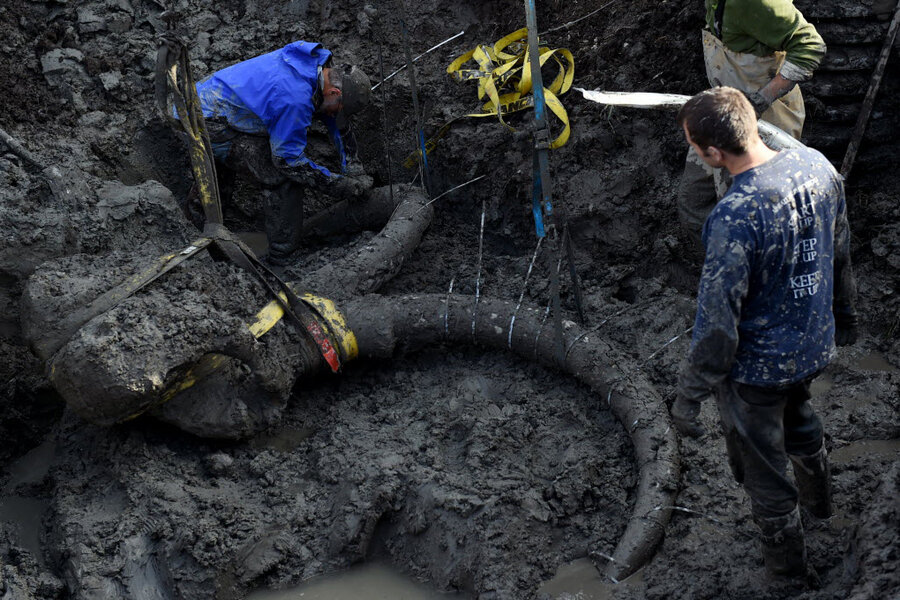Michigan farmer reaps surprising harvest – wooly mammoth fossils
Loading...
A farmer was getting ready for the soybean harvest when he made a surprising discovery: wooly mammoth bones.
James Bristle and Trent Satterthwaite, both farmers, were on Mr. Bristle’s farm in Lima Township, Mich., draining water from part of the field, when a wood-like substance began to emerge from the soil, the Detroit Free Press reports. At first they thought it was part of a decayed fence post, but it wasn’t long before they realized that what they were looking at was actually bone.
“I think we just found a dinosaur or something,” Mr. Satterthwaite joked at the time.
They called the University of Michigan, who sent in a team of researchers. They worked to excavate the skeleton with the farmers and local residents all day on Thursday, so as not to interfere with Bristle’s plans for the harvest.
The skeleton they found turned out to be a wooly mammoth, and a surprisingly intact one at that. The remains found included its skull, jaw, vertebrae, and ribs. When fully grown, it would have stood ten feet tall at the shoulder.
"We didn't find any of the legs or feet of the animal," Dan Fisher, of the Museum of Paleontology at the University of Michigan, told the Detroit News. "But it was probably about six to seven tons in weight.”
Professor Fisher added that the woolly mammoth had lived between 10,000 and 15,000 years ago and had probably been hunted by humans, who then butchered it and left it in a pond. This was a preservation technique believed to have been employed by early hunters.
“They did that to store meat and come back to it later," he told The Ann Arbor News – perhaps during the winter, when food was more scarce.
The archaeologists from the university are excited about what questions the skeleton could answer about mammoths and their habits. The farmers, for their part, simply remain excited about their unusual afternoon discovery.
"We knew it was something that was out of the norm," Bristle told the Ann Arbor News. "My grandson came over to look at it, he's 5-years-old, he was speechless."








